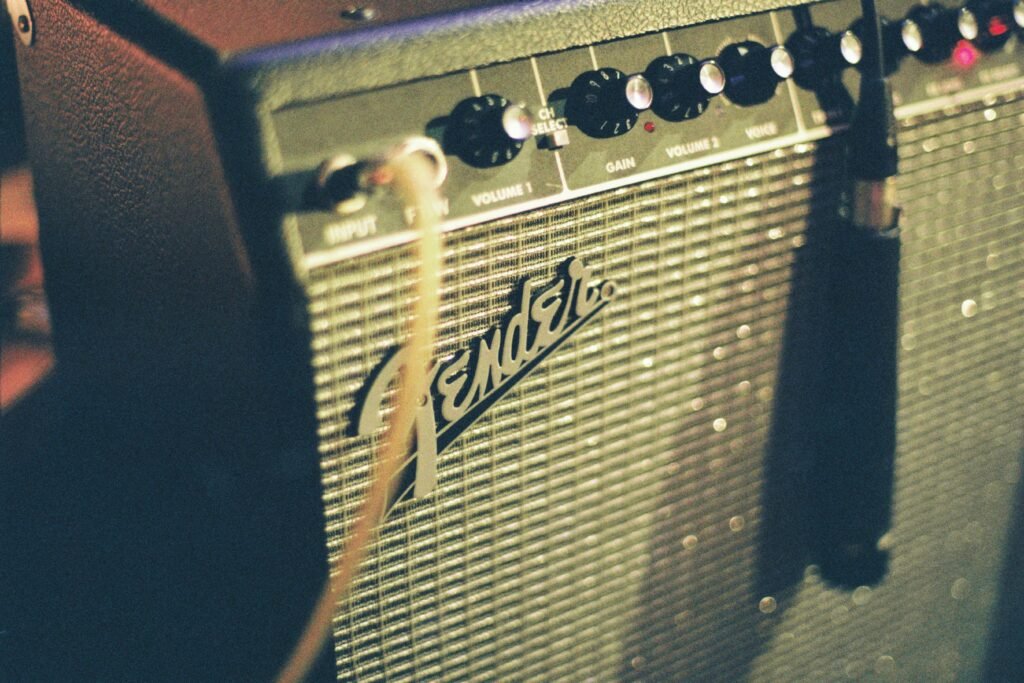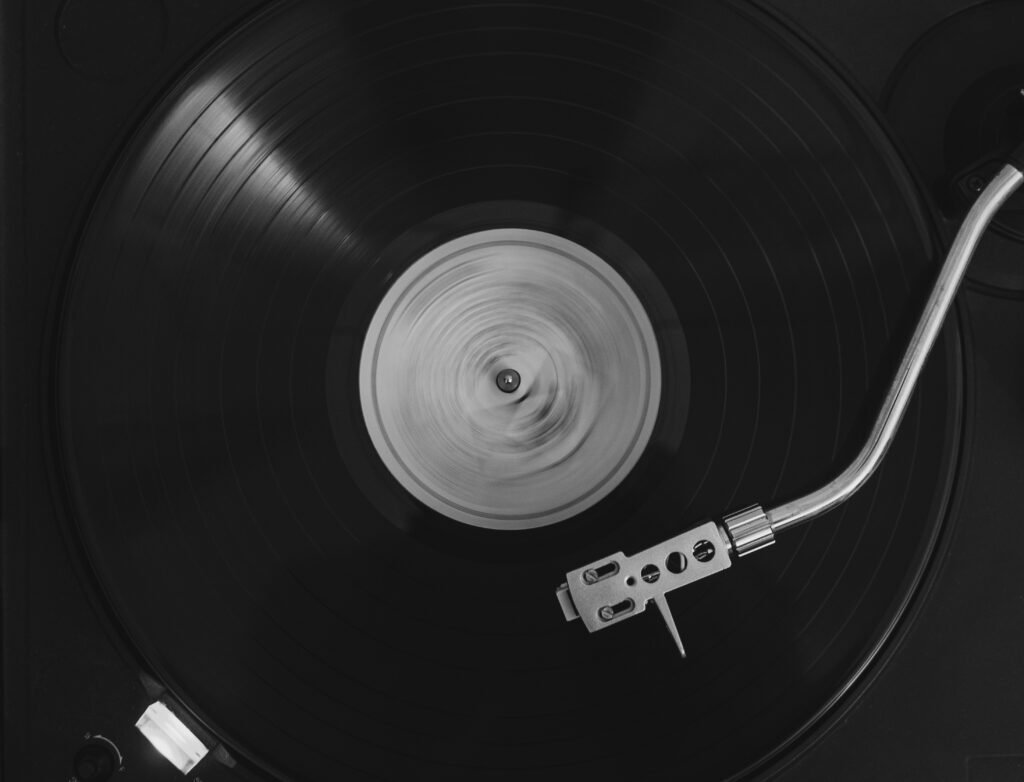PJ Harvey’s Dry, released in 1992, marks a bold entry into the world of alternative rock. It was her first full-length album, and it arrived with a raw intensity that set her apart from the more polished sounds of the early ’90s. While grunge was surging in the U.S. and Britpop was taking shape in the UK, Harvey carved out her own space. Her sound was jagged, urgent, and emotionally charged, creating a stark contrast to the prevailing trends of the time.
Recorded with bandmates Rob Ellis and Steve Vaughan, Dry showcased Harvey’s early ability to blend rough-edged guitar riffs with sharp lyrical insight. The record didn’t just hint at potential; it declared her arrival with conviction. She tackled themes like identity, power, and vulnerability, often through a lens that challenged conventional gender roles in rock music.
Sonic Exploration

Dry thrives on a sound that feels as unfiltered as the emotions it explores. The production, handled in part by PJ Harvey herself along with Head and Rob Ellis, leans into a gritty, almost live-in-the-room feel. Rather than polish the rough edges, the album embraces them. This lo-fi approach doesn’t hinder the music—it heightens its impact. The stripped-back recording mirrors the album’s raw subject matter, letting every jagged chord and strained vocal land with full force.
The arrangements are tight and purposeful. Guitars often slash rather than shimmer, drums thump with an almost primal force, and bass lines hold the ground with an understated steadiness. There’s little ornamentation here; each instrument carries weight. Harvey’s voice, shifting from a whisper to a wail, sits at the center. She uses her vocals not just to deliver lyrics but to shape the emotional core of each track. On songs like “Sheela-Na-Gig” and “Dress,” the interplay between her voice and guitar work is especially striking, creating a sense of tension and release that drives the songs forward.
Musically, the album draws from a mix of alternative rock, post-punk, and blues. But Harvey doesn’t just borrow from these genres—she reshapes them. The influence of post-punk can be felt in the jagged rhythms and stark dynamics, while bluesy undertones lend a raw, emotional depth. Yet the blend never feels calculated. Instead, it comes across as instinctive, a reflection of Harvey’s own artistic impulses. The result is a sound that feels familiar yet entirely her own. Dry doesn’t aim to fit into any mold—it carves out its own space.
Lyrical Analysis

At the heart of Dry lies a fierce lyrical voice—one that is unafraid to confront discomfort, vulnerability, and desire. PJ Harvey crafts a world where power dynamics, gender identity, and raw emotion collide, often within the same verse. The album’s themes are urgent and unapologetic, with a sharp focus on female agency and the complex dance between strength and submission.
Across the tracklist, recurring motifs of the body, sexuality, and selfhood appear with intensity. In “Sheela-Na-Gig,” for example, Harvey mocks societal shame around female expression, turning ancient iconography into a bold declaration of defiance. “Oh My Lover” tackles the messiness of romantic entanglement with brutal honesty, laying bare the push and pull of connection without retreating into metaphor.
The lyrical style on Dry walks a line between directness and poetic flair. Harvey doesn’t rely on dense imagery for effect; instead, she chooses words that cut clean. Her phrasing is often stark, but within that simplicity lies depth. Each line feels weighed and deliberate, lending her narratives a sense of raw truth. This balance makes the album both accessible and thought-provoking.
Emotionally, the lyrics hit hard. There is no sense of performance or pretense here. Harvey’s words feel lived-in, spoken from a place of genuine experience. Whether expressing desire, frustration, or defiance, her lyrics invite listeners into a space of shared feeling. They provoke thought and challenge norms, but they also connect on a deeply human level. Dry is not just a lyrical document of one artist’s perspective—it’s a call to recognize strength in vulnerability and voice in silence.
Cohesion and Flow

Dry unfolds with a steady, deliberate rhythm that makes it feel more like a single unified statement than a collection of individual songs. The track progression builds a compelling emotional arc, moving from confrontation to introspection without losing its edge. While each song stands firmly on its own, together they shape a larger story of personal and artistic defiance.
The album opens with “Oh My Lover,” a track that immediately sets the tone—intense, raw, and emotionally complex. From there, the flow moves through themes of desire, shame, empowerment, and vulnerability. Songs like “Dress” and “Victory” keep the momentum high, their tightly wound energy pushing the listener forward. Later tracks such as “Plants and Rags” offer moments of quiet tension, showing that Harvey is just as potent when she pulls back as when she pushes forward.
Thematic consistency plays a major role in the album’s impact. Harvey doesn’t stray from her core focus—exploring the physical and emotional experiences of womanhood with unflinching honesty. Even as the musical textures shift slightly from track to track, the emotional and lyrical throughline remains intact. There are no moments that feel out of place or overly polished. Instead, the album maintains its rough-edged intensity from start to finish, never losing sight of its purpose.
Standout Tracks and Moments
Among the many striking tracks on Dry, a few rise to the surface as defining points of PJ Harvey’s early artistry.
Sheela-Na-Gig
“Sheela-Na-Gig” is perhaps the album’s most iconic track. Its jagged guitar riff, biting lyrics, and infectious energy combine to form a song that is as confrontational as it is catchy. Harvey’s repeated refrain—“Look at these, my child-bearing hips / Look at these, my ruby-red ruby lips”—becomes a rallying cry, mocking societal expectations and asserting her own power with both wit and venom.
Dress
“Dress” is another standout, blending bluesy grooves with post-punk tension. It builds around a sense of unease, the guitar lines spiraling as Harvey navigates the emotional weight of appearance and expectation. The song’s layered dynamics—its quiet verses exploding into a stormy chorus—mirror the internal conflict at its core.
Plants and Rags
Then there’s “Plants and Rags,” a brief but haunting track that offers a shift in tone. Sparse and dreamlike, it feels like a pause in the storm, allowing space for reflection. The use of silence and restraint here is powerful. It shows Harvey’s ability to control mood not just through volume, but through presence and absence.
O Stella
One of the most memorable moments comes during “O Stella,” when Harvey’s voice breaks through the angular instrumentation with an almost desperate intensity. The repeated invocation of “Go, go” is both chant and cry, capturing the album’s recurring theme of spiritual and bodily conflict.
Artistic Contribution and Innovation

When Dry was released in 1992, it didn’t just add to the landscape of alternative rock—it helped reshape it. PJ Harvey’s debut stood apart in a scene dominated by male-fronted grunge bands and emerging Britpop acts. While many artists of the time were exploring angst and disaffection, Harvey brought a strikingly personal and gender-conscious perspective that was rare in rock music. Her voice—unapologetically intense and emotionally bare—challenged expectations and carved a space for more female-led narratives in the genre.
Within alternative and indie rock, Dry pushed boundaries by fusing raw punk energy with poetic restraint. Harvey didn’t rely on the dense sound walls that characterized much of early ’90s rock. Instead, she chose a more skeletal sound, one that left space for emotion to breathe. This stripped-down production felt revolutionary, allowing the songwriting and performance to take center stage without the distraction of overproduction.
Innovation
Thematically, the album was bold in its confrontations. Harvey tackled topics like sexual politics, bodily autonomy, and emotional complexity with a clarity that was both unsettling and invigorating. She didn’t soften her message for comfort. In doing so, she set a precedent for a more confrontational, self-aware form of songwriting within rock.
Harvey’s innovation lay not in flashy technique but in her willingness to bare herself—musically, lyrically, and emotionally. Dry didn’t follow the rules of its time. It forged a new path, one that many artists would later follow. The album remains a touchstone for how raw honesty and artistic vision can combine to push music forward, not just as sound, but as statement.
Closing Thoughts

Dry is a debut that doesn’t hesitate. From the first note, PJ Harvey announces herself as a singular voice—fierce, vulnerable, and fully in control of her artistic vision. The album’s greatest strength lies in its raw honesty. Every track pulses with urgency, and every lyric carries the weight of someone unafraid to confront herself and the world around her. Its lo-fi, unvarnished sound only amplifies its emotional power, making each song feel intimate and immediate.
Lyrically, the album is sharp and fearless. Harvey explores identity, gender, and desire with a poetic intensity that avoids both melodrama and cliché. While some listeners may find the starkness of its production or the abrasive edge of its sound challenging, these are deliberate choices. They are what give Dry its staying power and what make it resonate decades after its release.
As a first step in PJ Harvey’s career, Dry is remarkable not just for its quality but for its clarity of purpose. It set the tone for a discography defined by reinvention and boldness, yet it remains a benchmark of emotional candor and sonic restraint.
Official Rating: 9/10
This score reflects the album’s lasting influence, lyrical depth, and uncompromising artistry. While not perfect in a traditional sense, its imperfections are part of its brilliance. Dry is not just a debut—it’s a blueprint for how to make a statement that still echoes years later.
